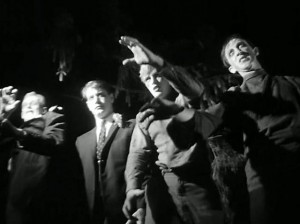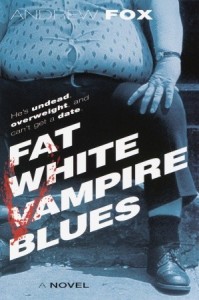I suspect that every American childhood of the past seventy years has been indelibly marked by at least one unforgettable image from a movie. The rating system devised by the Motion Picture Association of America and the National Association of Theater Owners is meant, in part, to shield our youngsters from having their brains seared by sights and sounds they aren’t mature enough to process. But then those same organizations turn around and allow films that are marketed primarily to children (i.e.: super-hero movies, heavily advertised on Cartoon Network and through McDonalds Happy Meal toys) to hit the theaters with a rating of PG-13. Which leaves parents in a quandary: do we take the kids to see Iron Man 2 or Green Lantern or X-Men: First Class, or not? The kids want to see those films. I want to see those films. I know I won’t have any opportunity to see those movies unless I take the kids. So am I a bad parent if I expose my 7, 6, and 4 year-old sons to a little dose of the ol’ ultra-violence?
Of course, it very much depends on the kids and their capacities to be disturbed. Asher, my middle son, is terrified by loud noises. No fireworks displays for him. I know this. I recognize that one sure way to have a miserable family outing is to drag Asher to see fireworks. Asher is also my son most prone to getting scared during an intense action film or monster movie. But he handles it much better than he does fireworks — he hides his eyes or buries his face in my shoulder, melodramatically squeals or whimpers, then looks back at the screen when whatever was frightening him has gone away, and goes on having a good time. The other two boys, his older and younger brothers, pretty much take PG-13 rated monsters and suspense in their stride. So, generally I’m not too worried when I take them to see a PG-13 rated super-hero film, unless I’ve read that a particular one is notable for very intense violence, excessive bad language, or other material not appropriate for the under-12 set (I personally think the very black take on Batman in The Dark Knight films is beyond my kids and wouldn’t be enjoyed by them).
However… no matter how careful you think you’re being as a parent, there’s always that chance that some truly horrific image that you hadn’t heard about is going to sear itself into your young offspring’s receptive brain. And they’re never going to forget what they saw. And they’ll probably be talking about it with their friends and family members for the rest of their life.
Is this necessarily a bad thing? As in, “bad for their development?” I don’t think so. At least it doesn’t have to be. A genuinely frightening or disturbing image from a movie can be a springboard to learning, exploration, and greater self-knowledge. Or at least give your child something to grin about as a grown-up.
My personal experience with the “movie image you’ll never forget” came in 1970, when I was five, a year older than Judah and a year younger than Asher. My father took me to see Beneath the Planet of the Apes, easily the most weird and disturbing of the original five Apes films. Could this film actually have been rated G by the MPAA? The notion astounds me, given how big an impact the movie’s violence (check out Charleton Heston’s bloody fingers at the end, pushing the levers that activate the cobalt bomb) and horrific content had on me. Yet when I look it up to be sure, there it is. Rated G, just like Herbie the Love Bug or The Sword in the Stone. So, in retrospect, my father was much, much less to blame for any trauma I suffered at the age of five than I am for any trauma my littlest son may have recently absorbed.
The scene that sort of traumatized me (but which definitely fascinated me and continues to be a source of weird fascination) is the scene where beautiful Natalie Trudy (who would portray a much more sympathetic character in the next film in the franchise, Escape from the Planet of the Apes), playing the telepathic, subterranean mutant Albina, strips off her mask as part of a religious ceremony exalting a cobalt bomb, revealing herself as a bald, hideously scarred monstrosity. She isn’t the only character to unmask during this scene, but since she was the only woman, her unveiling was the one most indelibly seared into my consciousness. (Beautiful women aren’t supposed to turn into monsters, at least according to my logic at the age of five.)
I couldn’t stop asking my father about the radioactive mutants when the movie was over. What had made them that way? What was an atomic bomb? My father did his best to explain about the Manhattan Project in World War Two and how the atom bomb was dropped on Hiroshima and Nagasaki. I was fascinated. I tried to learn more (mostly by watching 1950s H-bomb giant bug movies, a swell source for reliable scientific information). A few years later, in the club house in my back yard, I had arguments with my best friend over which was stronger: the A-bomb or the H-bomb? Sort of like, who is stronger: Superman or Thor? I said the atom bomb was stronger, because it had actually been used in a real war, whereas the H-bomb had only been used in tests. My friend insisted the hydrogen bomb was stronger. He was right, of course; it takes the explosion of a small atom bomb to set off a hydrogen bomb. Anyway, that climactic scene from Beneath the Planet of the Apes still has the power, more than forty years later, to pull me back to the awe, revulsion, and horror my five year-old self experienced.
Last weekend, seeing that X-Men: First Class had arrived at our closest “cheapie” movie house, I decided I would have a Saturday night out with the boys. (Dara wasn’t interested in Marvel’s Merry Mutants.) They were thoroughly stoked to see the movie, having absorbed a couple of months’ worth of advertising. We went out for dinner first, at Dennie’s (two free kids’ meals for every adult meal purchased!), then drove over to the University Mall Theaters, a small, 1970s quad-plex cinema tucked away into a bi-level strip mall not far from George Mason University. I’d heard good things about X-Men: First Class, and I liked the fact that the scriptwriters had set the picture during the years the first X-Men comics had come out. It easily ended up being my favorite of Marvel’s mutant films. The major characters (Xavier, Eric/Magneto, and the young Raven/Mystique) were very well cast. The script, especially for a super-hero adventure film, was exemplary in its attention to character building. I actually cared about Eric and Raven and some of the others (particularly poor Hank McCoy), rather than simply being dazzled by the special effects and battle scenes. The only other super-hero movies I can recall feeling that way about are Christopher Reeves’ second Superman film, The Dark Knight Returns, and the first Iron Man. (Maybe the second Spider-Man, too, if I’m feeling especially sentimental about New York City.) The writers did an especially good job with fleshing out Magneto. I’d certainly pay to see another Magneto film set during the 1960s. Cool beans.
If you haven’t yet seen the film (it’s now been out for a while), read no further. I’m going to reveal the scene that transfixed two of my sons, and it gives away the ending.
It’s rather a brilliant scene, I think. Well worth the moderate gore it subjects viewers to. The film begins with young Eric being separated from his mother in a concentration camp in Poland, a trauma which causes Eric to reveal his powers over magnetism. The mutant we later come to know as Sebastian Shaw serves as Eric’s chief tormentor and mentor in the camp and, in an effort to force Eric to magnetically levitate a Nazi coin, shoots Eric’s mother in front of him. After Eric goes momentarily crazy and deforms every piece of metal in the room, Shaw “rewards” him by giving him the coin. Eric retains the coin throughout the film. At the film’s climax, aboard a crippled nuclear submarine, Eric uses the coin to murder Shaw. In very graphic fashion–while Shaw is immobilized by an unwitting Charles Xavier, Eric slowly and deliberately propels the coin straight through Shaw’s skull and brain. It goes in through his forehead and emerges, dripping blood, from the back of his head.
The scene is so effective emotionally because it both humanizes Magneto–his chosen murder/vengeance weapon is the possession which reminds him most searingly of his mother’s death–and it viscerally illustrates how ruthless and savage his experiences have made him. Had Charles Xavier been present in the submarine’s nuclear engine chamber with Shaw and Eric, there would have been no way he would have countenanced what his friend did. Yet we, the audience, having seen things that Xavier did not (or perhaps Xavier had seen all that we had in that camp in Poland, having explored Eric’s mind earlier in the film), and having witnessed how murderously strong the nuclear energy had made Shaw, give the anti-hero a moral pass to carry out his vengeance. It feels necessary. It feels right, perhaps even righteous.
Which is all fine and good for me, a 46 year-old man. I’m emotionally equipped to handle emotional and moral nuance. Judah, Asher, and, to a lesser extent, Levi are a different story. I don’t think the coin-through-the-head scene made much of an impression on Levi, who was captivated by the overall “coolness” of the movie, its characters, and its effects. Asher, to his credit, was able to make the connection between the Nazi coin’s roles at the beginning of the movie and at its end. Judah simply absorbed the image without much understanding. “How come he put a penny through his head?” he asked. I did my best to explain. “Eric killed the man who killed his mommy. He used the coin because he controls things made out of metal.”
We had a bit of a mishap on the ride home. Judah gets car sick sometimes. I made the minor mistake of taking Old Bridge Road, very curvy with lots of ups and downs mixed in, and I took some of the curves a little fast. Not long afterward, I heard the sound of retching, followed by choruses of “EWWW” and “Oh, gross!” from Levi and Asher. I pulled over at the nearest drug store, which I discovered to my dismay had just closed, then ran the boys across the street to a Mexican restaurant so I could clean Judah up in their bathroom.
I have no idea whether the coin-through-the-head scene had anything at all to do with Judah’s throwing up. He is definitely prone to car sickness, and he ate a decent amount of candy in the movie, and I took those curves too darned fast. Still, I’m sure his memory of that movie scene will be indelibly mingled with his memory of upchucking in the car.
I’ll be very interested to ask him about it fifteen years from now and hear just what his memory dredges up.
































